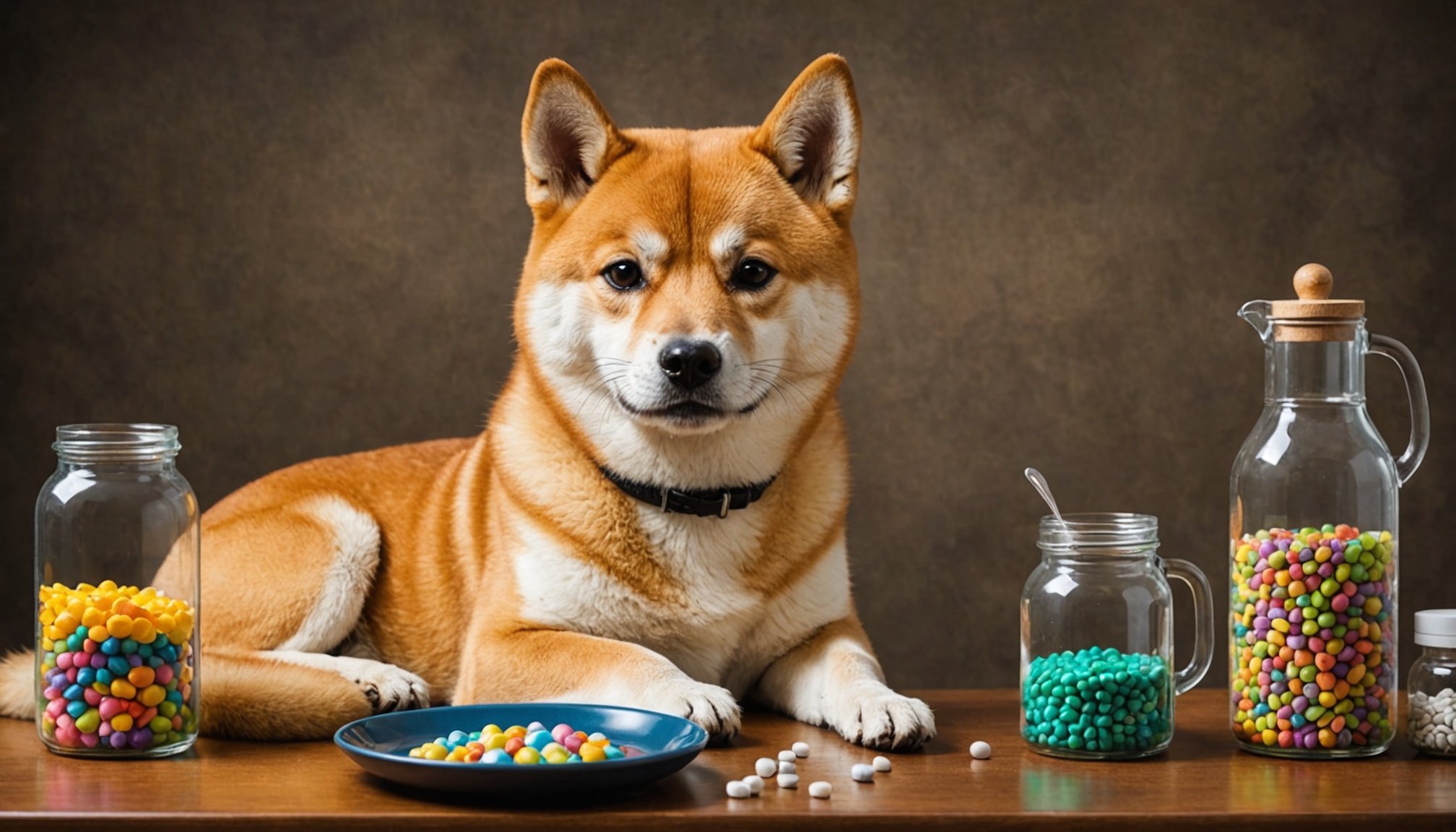Understanding Shiba Inu Behavior
Before diving into medication challenges, it’s crucial to understand the breed characteristics of Shiba Inus. Known for their independent and bold personalities, Shiba Inus can be quite stubborn. They often exhibit a spirited and adventurous demeanor, which is both charming and challenging for owners. This independence can lead to difficulties in administering medication, as Shiba Inus may resist cooperative actions they see as unnecessary.
Understanding these behavioral traits is essential for developing effective strategies. Shiba Inus tend to be wary of changes in their routine, which includes new objects or medication methods introduced by their owners. A patient approach, combined with positive reinforcement, often yields the best results in overcoming such challenges. For instance, incorporating the medication process into a playtime routine might disguise the activity as a fun game rather than an obligation.
In the same genre : The definitive handbook: top techniques for control shedding in your thick-coated siberian husky
Recognizing each dog’s unique behavioral tendencies is equally important. While all Shiba Inus share certain breed traits, individual personalities can vary widely. Some might be more playful, while others more reserved. Paying attention to these nuances will enable you to tailor your methods to your dog’s specific needs. Ultimately, a thorough understanding of your Shiba Inu’s behavior can transform the medication experience from a daunting task into a manageable one.
Preparing for Medication Administration
Ensuring your dog’s readiness for medication is crucial. Creating a calming environment can help your pet feel more relaxed. Start by selecting a quiet, comfortable space. Reduce distractions—turn off loud noises like the television or radio. Some owners find that soft lighting contributes to a soothing atmosphere.
Additional reading : Smart solutions to alleviate separation anxiety in your newly adopted pekingese pup
Incorporating positive reinforcement techniques can significantly improve your dog’s acceptance of the process. Praise your dog with a gentle voice and offer treats or their favourite toy before and after administering the medication. This helps your dog associate the experience with positive outcomes, making future administrations easier.
Before applying any medication, it’s essential to familiarize your dog with both the medication itself and the tools you’ll be using. Introduce them to items like droppers or syringes in a non-threatening manner. Allow your dog to sniff or inspect these items, which can help reduce any fear or anxiety they might have.
Remain patient and composed during this preparation phase. A calm demeanour from you will reflect positively on your dog, enhancing their comfort and cooperation. With the right approach, you’ll make medication administration a more pleasant experience for both you and your pet.
Effective Techniques for Administering Oral Medications
Administering medications to pets can be a challenge, but with the right strategies, it becomes manageable. Here, we explore methods for effective pill administration to your furry friends.
Using Pill Pockets and Treats
One popular strategy for dogs, particularly breeds like the Shiba Inu, involves the use of pill pockets or soft treats. These are specially designed to conceal the taste and texture of pills, making them more appealing. Simply place the medication inside the pocket and offer it to your dog as a treat. The enticing flavour and texture often trick the dog into swallowing the pill without hesitation. Ensure you’re using veterinary-recommended pill pockets for optimal safety.
Employing Syringes for Liquid Medications
When it comes to liquid medications, administer them with a syringe. Start by measuring the correct dosage with the syringe provided or as instructed by your vet. Gently insert it into the side of the dog’s mouth, between the cheek and teeth. Slowly release the liquid, allowing your dog to swallow comfortably. This precise method ensures the entire medication is consumed.
Disguising Medications in Food
For the discerning nose, disguising medication in favourite foods can be effective. Mix or hide the medicine in a small amount of canned food, cheese, or peanut butter. Be sure the portions are small, so they consume the entire medicated bite, ensuring effective pill administration.
Overcoming Resistance to Medication
Dealing with a stubborn Shiba Inu during medication time can be challenging, but understanding the signs of resistance is a crucial first step. Shiba Inus might display behaviour such as running away, growling, or showing anxiety when medication time approaches. By recognising these signs early, it’s possible to address the issue more effectively.
To increase cooperation, try redirecting your Shiba Inu’s attention through positive distraction techniques. This could include offering a favourite toy or engaging in a brief game. The aim is to create a positive association with the medication process, diverting attention away from the act itself.
Building trust with your dog requires patience and gradual desensitization. Start by introducing the medication setting without administering anything, allowing the dog to become comfortable with the environment and routine. Slowly incorporate steps leading up to medication time, like handling the medicine without forcing it, giving treats as a reward for calm behaviour.
Consistency in this approach reinforces familiarity, reducing overall stubbornness and resistance. Each successful interaction builds confidence and makes future medication times more straightforward. By applying these medication tips, you’ll be effectively managing your Shiba Inu’s resistance, ensuring their health needs are met without unnecessary stress.
Maintaining a Positive Experience
Creating a positive experience for both you and your pet when administering medication can be crucial in maintaining the owner-dog bond. It’s essential to approach this task with calm and positive energy to keep the experience stress-free for your dog. You can lay the groundwork for a smoother process by being patient and gentle.
To reinforce this, explore tips to celebrate small victories. After successfully giving medication, reward your pet with praise or a small treat. This encourages a sense of achievement and builds a positive association with the process over time. Taking joy in these little wins can help mitigate any stress related to future medicating efforts.
Another crucial aspect is to build a consistent routine, treating medication as just another part of your day’s activities. Keep the timing regular to help your dog anticipate and adapt to the event without anxiety. This predictability fosters a stress-free environment, promoting a better overall experience.
Most importantly, reinforcing a strong owner-dog bond through these practices not only ensures effective medication but also strengthens trust and cooperation. By maintaining patience and focusing on creating positive experiences, both you and your pet benefit from a harmonious relationship.
Troubleshooting Common Challenges
Shiba Inu owners often encounter common challenges, particularly concerning the breed’s independent nature. These challenges can manifest in various ways, such as reluctance to accept medication or issues related to obedience and training. It’s crucial to tackle these obstacles effectively and ensure the well-being of your pet.
One frequent issue is the difficulty in administering medication. Shiba Inus can be quite stubborn, making it hard for owners to manage their health routines. Here are some solutions:
- Hide medication in tasty treats or meals, making it more palatable for your dog.
- Use flavored medication options if available.
- Consult with your veterinarian for advice on administration techniques or alternative medication forms.
For behavioral concerns, such as persistent disobedience, consider:
- Consistent training routines that include positive reinforcement.
- Engaging exercises and mental stimulation to channel their energy positively.
- Professional training assistance if issues persist.
It is essential to note that while these solutions may work in many cases, some challenges might require more expert intervention. Therefore, the importance of consulting a veterinarian cannot be overstated. They can offer specific insights into health or behavioral issues and recommend tailored strategies for your Shiba Inu, ensuring you address any concerns efficiently and effectively.
Utilizing Visual Aids for Better Understanding
Incorporating visual aids into educational content significantly enhances comprehension. Video guidance is particularly beneficial for learners, offering a dynamic way to absorb information. Watching a step-by-step video demonstration allows individuals to see processes unfold in real-time, making it easier to replicate tasks, such as administering medications.
Illustrations also play a crucial role in supporting understanding. For example, an illustrative diagram can guide users through intricate steps, breaking complex processes into manageable parts. Pictures and diagrams can depict tools and methods clearly, reducing the ambiguity of textual instructions. When learners see a visual representation together with words, the synergy of dual coding strengthens memory retention and understanding.
For those seeking further education, tapping into resources that provide additional video guidance or illustrative content can be incredibly useful. Websites and educational platforms often offer a plethora of videos and diagrams related to various subjects, including oral medication procedures. Utilizing these resources can clarify instructions, leading to more accurate application and increased confidence in one’s skills. Embracing visual aids as part of a learning toolkit is not only enriching but can lead to more self-assured and empowered individuals.











